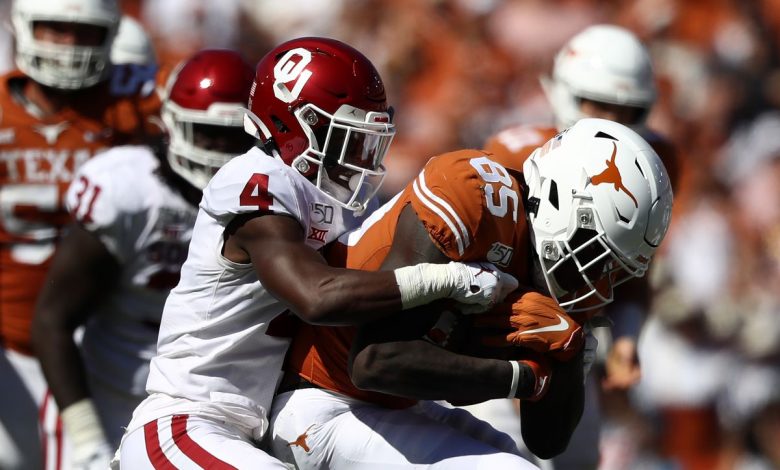Although the Longhorns and Aggies share the same SEC address, their athletic programs generate distinct amounts of money and expenses.

The landscape of college athletics has evolved drastically over the past few decades, particularly with the ongoing shift in conference realignment. In a monumental move that sent shockwaves throughout college sports, both the University of Texas and Texas A&M University made the transition from their longtime affiliations in the Big 12 Conference to the Southeastern Conference (SEC). For both institutions, the move to the SEC, one of the most prestigious and financially powerful conferences in college athletics, has been seen as a step toward greater exposure, competition, and financial gain.
However, while both schools now share the same conference address, the financial dynamics of their athletic departments are quite distinct. Texas and Texas A&M are two of the largest and most successful athletic programs in the country, but their revenue generation, operational expenses, and overall financial strategies vary significantly. These disparities highlight the broader financial landscape of college sports, where resources, spending, and overall fiscal health can differ drastically among even the most high-profile institutions.
This article will examine the differences in revenue generation and expenses between Texas and Texas A&M athletic programs. We will explore the sources of income, financial challenges, and future implications of these distinct financial structures as both schools navigate their shared SEC environment.
Revenue Generation: A Tale of Two Giants
The financial success of a college athletic program often hinges on multiple revenue streams, including media rights, ticket sales, sponsorships, merchandise, and donations. In these categories, Texas and Texas A&M are undoubtedly in the upper echelon of college athletics, but their revenue streams reflect differing priorities, strategies, and historical backgrounds.
1. Media Rights Deals: Texas Leads the Charge
The most significant source of revenue for most power-conference athletic programs is media rights deals, which are driven by television contracts for games, digital broadcasting, and streaming services. The SEC has long been one of the richest conferences when it comes to media rights, thanks to its partnership with ESPN and its lucrative television deals. However, Texas’ unique situation means it generates more revenue in this area than Texas A&M.
The University of Texas is a key player in the Longhorn Network (LHN), a channel created by the university in collaboration with ESPN to broadcast Texas sports. While this network has faced some challenges in terms of viewership and distribution, it has still provided Texas with a significant revenue stream. The Longhorns have also benefited from Big 12 TV deals before moving to the SEC, and their strong national fanbase makes them one of the most marketable teams in college sports.
Now that Texas has joined the SEC, the SEC media rights deal, which was valued at over $3 billion for 10 years, will include Texas as part of the conference’s expanded media package. However, this deal is distributed equally among all SEC teams, which means Texas’ portion will be similar to that of Texas A&M—around $40-50 million per year. Nevertheless, Texas remains a prominent player in media rights revenue due to its national visibility and large following.
2. Texas A&M: Capitalizing on SEC Exposure
Since its arrival in the SEC in 2012, Texas A&M has benefitted greatly from the conference’s media rights deal. The Aggies’ SEC membership immediately provided a significant boost to their revenue from television deals, as the SEC generates more revenue than any other conference in the country.
However, Texas A&M’s media rights revenue is still not as lucrative as Texas’ historical advantage with the Longhorn Network and their immense brand recognition. While Texas A&M has certainly leveraged its SEC membership to boost its visibility and earnings, its media rights revenue is tied to a conference-wide pool that is divided among all SEC members.
Although Texas A&M has been able to ride the wave of SEC exposure and is one of the top revenue-generating schools in college sports, the long-term impact of Texas’ more favorable media rights situation gives the Longhorns a larger slice of the pie when it comes to television contracts and revenue from televised games.
3. Ticket Sales and Attendance: The Aggies Close the Gap
When it comes to ticket sales, both Texas and Texas A&M enjoy strong fan support, but their respective stadiums and attendance figures reflect their individual market positions. Texas has historically benefitted from its Darrell K Royal–Texas Memorial Stadium, which is one of the largest stadiums in the country with a capacity of over 100,000 seats. The sheer size of the stadium and the fervent fanbase in the state of Texas have allowed Texas to generate immense revenue from home games.
Texas A&M, on the other hand, plays its home games in Kyle Field, which boasts a capacity of around 102,000 seats—just slightly behind Texas in terms of size. However, Texas A&M’s fan support is also incredibly passionate, with Aggie fans known for filling the stadium year after year, regardless of the team’s performance. Kyle Field is regularly sold out, and the revenue generated from ticket sales has become a major part of the athletic department’s income.
While Texas has a slight edge in terms of overall stadium capacity and higher average ticket prices, Texas A&M has closed the gap in recent years by capitalizing on the passion and dedication of its fanbase, as well as the excitement that comes with being a part of the powerhouse SEC.
4. Sponsorships and Endorsements: Texas A&M’s Growing Influence
Both schools have deep pockets when it comes to corporate sponsorships and endorsements, thanks to their respective athletic programs’ national reach and success. However, Texas has historically had an edge in attracting sponsorships due to its national brand and the unique presence it has established with the Longhorn Network.
On the other hand, Texas A&M has grown substantially in terms of its sponsorship and endorsement revenue since joining the SEC. The Aggies have benefitted from the SEC’s TV deals, greater exposure through high-profile games, and partnerships with major companies that have been eager to associate themselves with the high-profile football program. As a result, Texas A&M has experienced significant growth in sponsorship revenue, even though it might not yet match Texas’ longstanding relationships with major brands.
Expenses: The Cost of High Expectations
While both Texas and Texas A&M have seen massive inflows of revenue from their various revenue streams, they also face substantial operational expenses. Running an athletic department at the highest level of college sports is no small feat, and the financial realities of such programs must be considered when evaluating their overall financial positions.
1. Coaching Salaries and Staff Compensation
One of the most significant expenses for both programs is the salaries of their coaching staffs, particularly in football, where salaries can easily reach into the millions. Texas, for example, has one of the highest-paid football coaches in Steve Sarkisian, whose salary and support staff compensation are among the highest in the country. This level of investment is expected of a program with the history and resources of Texas, but it also places a large financial burden on the athletic department.
Similarly, Texas A&M has been willing to make significant financial commitments to its football staff. Jimbo Fisher, the Aggies’ head coach, is one of the highest-paid coaches in the nation, and the salary structure for his assistant coaches is also substantial. As the cost of competing at the highest level of college football increases, both Texas and Texas A&M have committed vast resources to their coaching staffs in hopes of staying competitive in the demanding SEC.
2. Facility Upgrades and Maintenance
Another substantial expense for both programs has been the renovation and construction of state-of-the-art athletic facilities. Both schools have invested heavily in upgrading their football and basketball facilities in order to remain competitive within the ever-evolving world of college athletics.
Texas has been at the forefront of such investments, with recent upgrades to Darrell K Royal–Texas Memorial Stadium and the construction of world-class basketball and training facilities. Similarly, Texas A&M has made significant investments in its facilities, including a recent renovation of Kyle Field to enhance fan experience and player development areas.
These upgrades are essential for recruiting top-tier athletes and maintaining high-performance standards, but they also require significant financial commitments. As these programs continue to invest in facilities, the costs associated with maintaining and upgrading their infrastructure will continue to rise.
Different Financial Strategies, Same SEC Goals
While both Texas and Texas A&M share the same SEC address, their financial realities are distinct. Texas’ historical revenue advantages through the Longhorn Network and its national brand set it apart in terms of media rights and sponsorships, while Texas A&M has used its SEC exposure to rapidly close the gap in ticket sales, corporate partnerships, and overall visibility.
Ultimately, the financial success of both programs will continue to be defined by their ability to navigate the high-stakes world of college athletics while balancing expenses and maximizing revenue generation. As Texas and Texas A&M prepare for their future in the SEC, they must stay vigilant in managing these financial dynamics, ensuring that their athletic departments can remain competitive in an era of escalating costs, high expectations, and fierce competition.
Their financial paths may differ, but both universities are undeniably among the most well-resourced and successful athletic programs in the country. The next chapter in the SEC rivalry between Texas and Texas A&M promises to be just as captivating off the field as it is on it.









